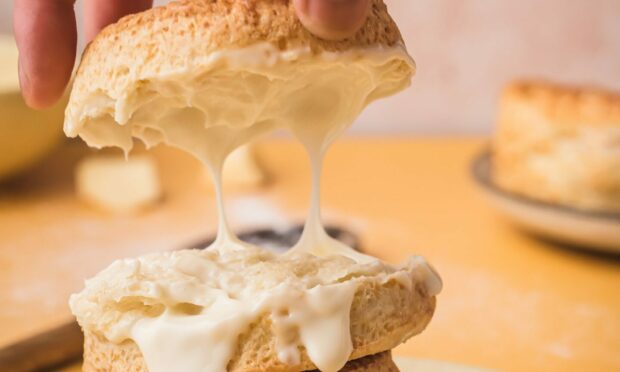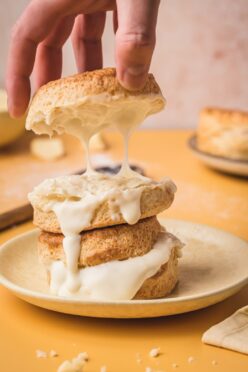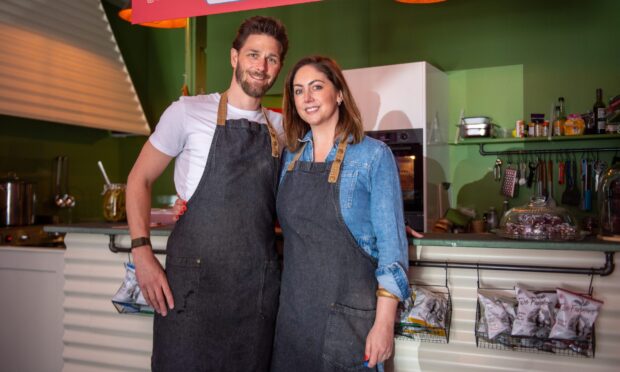If you want to add sparkle to Easter, try this timeless cheese scone recipe topped with extra creamy cheese.
The hot cross scones have a touch of mustard and a tube of Primula cheese to bring flavour to any celebration.
They are a great twist on classic hot cross buns.
Hot cross scones
(Makes 12 large scones)
Ingredients
- 300g all-purpose flour
- 300g strong white flour
- 5 tbsp baking powder
- 1½ tsp English mustard powder
- 1½ tsp salt
- 100g cold butter, cubed
- 300g cheddar, grated
- 400ml milk
- 1 yolk
- 1 tube Primula Original cheese (140g)
Method
- Place the flour, baking powder, mustard powder and salt in a large bowl. Rub the butter into the dry ingredients until it resembles breadcrumbs.
- Add the cheddar to the mixture, and lightly stir with your hands to combine.
- Gradually start pouring in the milk, depending on the flour you’re using as you might need more or less milk.
- Using your hands, lightly mix until you have a soft, moist dough and no dry crumbs remain on the bottom of the bowl. If the dough seems a little dry, add more milk.
- Preheat the oven to 220C/200 Fan/425F/Gas 7 and place two large pieces of parchment paper in two large baking trays.
- Turn the dough out onto a lightly floured surface. Lightly pat out to a rough square, no less than 1 inch thick. Using a large cutter, cut into rounds. Don’t twist the cutter when cutting or the tops of your scones will rise unevenly.
- Repeat cutting out the scones until all the dough is used up. You don’t need to knead the dough when re-rolling, just simply push it back together lightly with your hands. Bear in mind that the less you handle the dough, the lighter your scones will be.
- Leave the scones to rest for about 10 minutes before baking. This allows the gluten to relax after handling the dough, resulting in a lighter scone.
- Place the scones on the baking trays, brush with the beaten egg yolk (try not to let the liquid run down the sides or it could affect the rise), place in the oven and bake for 15 minutes or until well risen and golden on top.
- Serve them warm with Primula Original cheese on top or inside.
For more midweek meal ideas, click on our extensive archive. Primula has more cheese-based recipes on its website.











